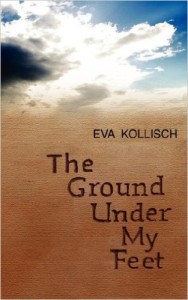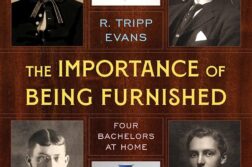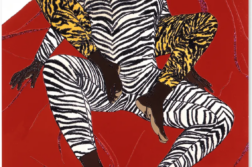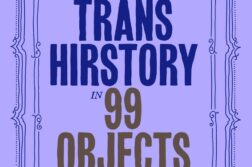 The Ground Under My Feet
The Ground Under My Feet
by Eva Kollisch
Hamilton Stone Editions. 11 pages, $14.95
EVA KOLLISCH’S The Ground Under My Feet is lSeveral essays also deal with her rescue from the Nazis by the Kindertransport—an operation that brought 10,000 Jewish children from Germany, Austria, and Czechoslovakia to England in 1938-39—and the subsequent effects of these experiences on her. Most of the pieces were published in other venues over a period of more than forty years. Although they were revised for this collection, the repetition of facts—for example, that her mother was a poet and her father an architect—is sometimes distracting. Yet the overall effect of this collection, its cumulative exploration of learning to cope with and survive virulent hatred and insane prejudice, is quite poignant and powerful.
Lesbian subject matter is presented briefly in the story “Stealing,” in which the autobiographical character, a young girl, uses money she steals to buy gifts for another girl on whom she has crush. A couple of essays refer to Naomi Replansky, Kollisch’s “longtime companion,” as she’s described in a biographical note; but she is called only “N.” or “my companion [who is]a woman” in those essays. “Together/Alone,” an essay about Kollisch’s experiences at a conference of people who survived Nazism because they were rescued by the Kindertransport, deals most extensively, and surprisingly, with a lesbian subject.
Kollisch laments in “Together/Alone” that, had N. been able to accompany her to the conference, Kollisch would have had an easier time: “We would have been able to share our impressions of what was happening here, and at night we would have found comfort in bed, feeling at ease and loved.” Naomi’s presence, Kollisch speculates, might have made things easier for another reason as well: she would not have had to feel challenged to declare she was a lesbian if N. had been there, because people would have seen for themselves what was surely self-evident. Yet would the nature of the relationship between Kollisch and N. really have been self-evident? As Kollisch recognizes, people might not have “seen” anything but two elderly ladies with “fine features,” and they might simply have assumed the two were nothing more than friends. However, what others might or might not have understood had Naomi come to the conference is irrelevant. She has not come, and the dilemma looms for Kollisch: how does a septuagenarian announce to a group of other septuagenarians, who have gathered to remember the Kindertransport, that she is a lesbian?
Kollisch, who has been married and has grandchildren, realizes that if she makes no declaration, she passes as straight. Hers is a dilemma that many of us, particularly those of a certain generation, will easily recognize. She can discuss anything in this group of survivors—painful losses, abuse by the family in England with whom she was placed. But the “ritual of self-disclosure” about her love for another woman is tremendously difficult. Finally, she rationalizes, “That I am all the other things I am or was—seems to me at least as important. Oh, leave me alone, don’t invade my privacy.” Kollisch misses the opportunity to come out on this occasion; yet she understands what is terribly wrong with her rationalizing. “If I don’t want to come out whenever I’m scared, I’m just another ‘good German’—supporting the insupportable.”
At a subsequent conference of the Kindertransport survivors, Kollisch did come out, and she reports in this essay that in doing so she experienced “a rush of gratitude and pride.” Predictably, among her fellow Kinder, who had themselves had such excruciating experiences of rejection, nobody “blinked an eye” at her pronouncement. She recognizes finally that her struggle was not with this group but with herself, with her terror of “the jeering mob,” a trepidation she’d learned as a Jewish child among anti-Semites. “Together/Alone” invites the GLBT reader to understand that the worst struggle in coming out is almost always with ourselves and the “jeering mobs” that are etched in all our psyches.
While lesbian material is not dominant in these thoughtful essays and stories, the language and situations throughout the collection will suggest to many readers parallels between their own histories and that of Jews in pre-Hitler Austria. In the story “In the Land of the Absolute,” for example, the autobiographical character develops self-hatred, looking down on other Jews because she suffers verbal and physical attacks for her Jewishness from her anti-Semitic classmates. In the story “A Day in Three Voices,” the main character, again bullied and discriminated against, struggles to accept “that she was a ‘Jew’ and trie[s]to summon up the pride of being different.” In the essay “Father,” Kollisch speculates about the plight of her father, who had to learn to function in a conservative and fiercely anti-Semitic environment. How did he manage even to operate in his profession in the face of so much hatred and hostility? “What a high wire act it must have been for him to exude self-confidence and insouciance, as if he never doubted his right to belong.” Most of the essays and stories in The Ground Under My Feet are about the suffering visited on people not because of anything they did but simply because of who they were. It will take no great stretch of the imagination for GLBT readers to identify with their pain and struggle.
Lillian Faderman is the author of several books on lesbian history as well as the memoir, Naked in the Promised Land.






